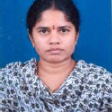International Journal of Modern Education and Computer Science (IJMECS)
IJMECS Vol. 7, No. 2, 8 Feb. 2015
Cover page and Table of Contents: PDF (size: 846KB)
Texture Analysis Based on Micro Primitive Descriptor (MPD)
Full Text (PDF, 846KB), PP.32-41
Views: 0 Downloads: 0
Author(s)
Index Terms
Micro primitive descriptor, motif transformed image, texture classification
Abstract
Texture classification is an important application in all the fields of image processing and computer vision. This paper proposes a simple and powerful feature set for texture classification, namely micro primitive descriptor (MPD). The MPD is derived from the 2×2 grid of a motif transformed image. The original image is divided into 2×2 pixel grids. Each 2×2 grid is replaced by a motif shape that minimizes the local ascent while traversing the 2×2 grid forming a motif transformed image. The proposed feature set extracts textural information of an image with a more detailed respect of texture characteristics. The results demonstrate that it is much more efficient and effective than representative feature descriptors, such as Random Threshold Vector Technique (RTV) features and Wavelet Transforms Based on Gaussian Markov Random Field (WTBGMF) approach for texture classification.
Cite This Paper
Rasigiri Venkata lakshmi, E. Srinivasa Reddy, K. Chandra Sekharaiah, "Texture Analysis Based on Micro Primitive Descriptor (MPD)", International Journal of Modern Education and Computer Science (IJMECS), vol.7, no.2, pp.32-41, 2015. DOI:10.5815/ijmecs.2015.02.05
Reference
[1]Bovik, A. C., Clark, M. and Geisler, W. S. “Multichannel texture analysis using localized spatial filters”, IEEE Trans. Patt. Anal. Mach. Intell., 12, 1, pp. 55-73, 1990.
[2]R.M. Haralick, K. Shanmugam, I. Dinstein, “Texture features for image classification”, IEEE Transactions on System Man Cybernat, Vol. 8, No. 6, 1973, pp. 610-621.
[3]Haralick, R. M. “Statistical and structural approaches to texture”, Proc. of 4th Int. Joint Conf. Pattern Recognition, pp. 45-60, 1979.
[4]Vijaya Kumar, V., Raju, U.S.N. , Chandra Sekaran , K. and Krishna, V. V. “ A New Method of Texture Classification using various Wavelet Transforms based on Primitive Patterns”, ICGST International Journal on Graphics, Vision and Image Processing, GVIP, Vol.8, Issue 2, pp. 21-27, 2008.
[5]Jia, W., Huang, D.S., Zhang, D.: Palmprint Verification Based on Robust Line Orientation Code. Pattern Recognition 41(5), 1504–1513 (2008).
[6]Anys, H., He, D.C.: Evaluation of Textural and Multi polarization Radar Features for Crop Classification. IEEE Transactions on Geoscience and Remote Sensing 33(5), 1170–1181 (1995).
[7]Ji, Q., Engel, J., Craine, E.: Texture Analysis for Classification of Cervix Lesions. IEEE Transactions on Medical Imaging 19(11), 1144–1149 (2000).
[8]M. Tuceyran and A.K. Jain, “Texture analysis, in Handbook of Pattern Recognition and Computer Vision”, (2nd edition), World Scientific Publishing Co., Chapter 2.1, 1998, pp. 207-248.
[9]F. Argenti, L. Alparone, and G. Benelli, “Fast algorithms for texture analysis using co-occurrence matrices”, IEE Proceedings-F, Vol. 137, No. 6, December 1990, pp. 443-448.
[10]Randen, T., Husy, J.H.: Filtering for Texture Classification: Pattern Analysis and Machine Intelligence 21(4), 291–310 (1999).
[11]Kashyap, R.L., Khotanzed, A.: A Model-based Method for Rotation Invariant Texture Classification. IEEE Transactions on Pattern Analysis and Machine Intelligence 8(4), 472–481 (1986).
[12]Mao, J., Jain, A.K.: Texture Classification and Segmentation Using Multiresolution Simultaneous Autoregressive Models. Pattern Recognition 25(2), 173–188 (1992).
[13]Wu, W.R., Wei, S.C.: Rotation and Grey-scale Transform-invariant Texture Classification Using Spiral Resampling, Subband Decomposition, and Hidden Markov Model. IEEE Transactions on Image Processing 5(10), 1423–1434 (1996).
[14]Deng, H., Clausi, D.A.: Gaussian MRF Rotation-invariant Features for Image Classification. IEEE Transactions on Pattern Analysis and Machine Intelligence 26(7), 951–955 (2004).
[15]Richards, J. A. and Xiuping, J. (1999). Remote Sensing Digital Analysis: An Introduction. Germany: Springer- Verlag, vol.3, pp.363-363.
[16]Moody, A. and Johnson, D. M. (2001). Land-surface phonologies from AVHRR using the discrete Fourier transform. Remote Sens. Environ., vol. 75, pp. 305-323.
[17]Zhang, M., Carder, K. and Muller, karger. (1999). Noise reduction and atmospheric correction for coastal applications of landsat thematic-mapper imagery. Remote Sens. Environ., vol. 70, pp. 167-180.
[18]Burrough, P. A “Multiscale sources of spatial variation in soil, the application of fractal concepts to nested levels of soil variation”, Journal of Soil Sci., vol. 34, pp. 577-597. 1983.
[19]Atkinson, P. M. and Lewis, P. (2000). Geostatistical classification for remote sensing: An introduction. Comput. Geo. sci., Vol. 26, pp. 361-371.
[20]Curran, P. J. (1988). The Semivariogram in Remote Sensing: An Introduction. Remote Sens. Environ., vol. 24, pp. 493-507.
[21]Treitz, P. (2001). Variogram analysis of high spatial resolution remote sensing data: An examination of boreal forest ecosystems. Int. J. Remote Sens., vol. 22, pp. 3895-3900.
[22]Woodcock, C. E., Strahler, A. H. and Jupp, D. L. (1988). The use of variograms in remote sensing II: Real digital images. Remote Sens. Environ., vol. 25, pp. 349-379.
[23]Moody, A. and Johnson, D. M. (2001). Land-surface phenologies from AVHRR using the discrete fourier transform. Remote Sens. Environ., vol. 75, pp. 305-323.
[24]McCloy, K.R. (2002). Analysis and removal of the effects of crop management practices in remotely sensed images of agricultural fields. Int. J. Remote Sens., vol. 23, pp. 403-416.
[25]Peder, Klith Bocher. and Keith, R. McCloy. (2006). The Fundamentals of Average Local Variance: Detecting Regular Patterns. IEEE Trans. on Image Processing, vol. 15, pp. 300-310.
[26]Suresh A. and Vijaya Kumar V. et al. (2007). Texture Classification by Simple Patterns on Edge Direction Movements. International Journal of Computer Science and Network Security, vol. 7, no. 11, pp. 221-225.
[27]Suresh A. and Vijaya Kumar V. et al. (2008). Classification of Textures by Avoiding Complex Patterns. Journal of Computer Science, Science Publications, USA, vol. 4(2), pp.133-138.
[28]Varma, M., Zisserman, A.: A statistical Approach to Texture Classification from Single Images. International
Journal of Computer Vision 62(1-2), 61–81 (2005).
[29]Ojala, T., Pietikäinen, M., Mäenpää, T.T.: Multiresolution Grey-scale and Rotation Invariant Texture Classification with Local Binary Pattern. IEEE Transactions on Pattern Analysis and Machine Intelligence 24(7), 971–987 (2002).
[30]Zhenhua Guo, Qin Li, Lin Zhang, Jane You, Wenhuang Liu, and Jinghua Wang, “Texture Image Classification Using Complex Texton”, ICIC 2011, LNAI 6839, pp. 98–104, 2012. Springer-Verlag Berlin Heidelberg 2012.
[31]Jin Xie, Lei Zhang, Jane You and David Zhang , “TEXTURE CLASSIFICATION VIA PATCH-BASED SPARSE TEXTON LEARNING”.
[32]Laurens van der Maaten a Eric Postma a “Texton-based Texture Classification”
[33]N. Jhanwar, S. Chaudhuri, G. Seetharaman, B. Zavidovique “Content based image retrieval using motif cooccurrence matrix”, Image and Vision Computing 22 (2004) 1211–1220.
[34]Julesz B., ―Textons, The Elements of Texture Perception, and their Interac-tions,” Nature, vol.290 (5802): pp.91-97, 1981.
[35]Julesz B., ―Texton gradients: the texton theory revisited,” Biological Cybernet-ics, vol.54 pp.245–251, 1986.
[36]B.V. Ramana Reddy, M.Radhika Mani, B.Sujatha, and Dr.V.Vijaya Kumar “Texture Classification Based on Random Threshold Vector Technique”, International Journal of Multimedia and Ubiquitous Engineering Vol. 5, No. 1, January, 2010.
[37]B.V. Ramana Reddy, M. Radhika Mani, and K.V. Subbaiah, “Texture Classification Method using Wavelet Transforms Based on Gaussian Markov Random Field” International Journal of Signal and Image Processing Vol.1-2010/Iss.1 pp. 35-39.


